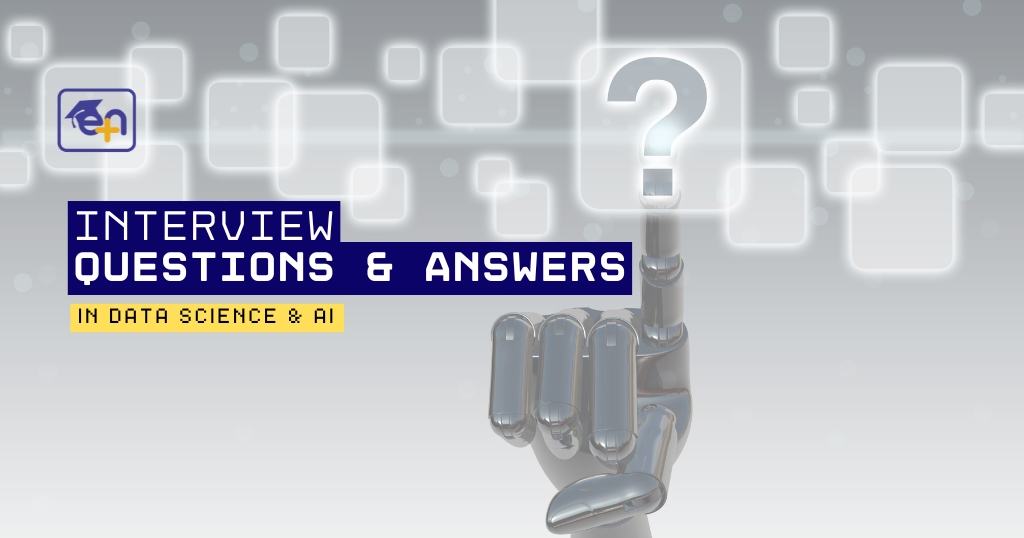With the rapid evolution of Artificial Intelligence (AI), Machine Learning (ML), Generative AI (Gen AI), Large Language Models (LLMs), Natural Language Processing (NLP), and Computer Vision, the demand for skilled data professionals has grown exponentially. Hiring managers today expect candidates to be proficient not only in core data science principles but also in advanced AI applications. This blog compiles the 20 most asked Interview Questions in Data Science across these domains, curated with detailed answers to help candidates confidently prepare for technical interviews.
Top 20 Most Asked Interview Questions in Data Science & Expert Answers
-
What is the difference between AI, ML, and Data Science?
Answer:
AI aims to create systems that mimic human intelligence. ML, a subset of AI, enables machines to learn from data. Data Science encompasses data analysis, data cleaning, visualization, and applying ML/AI algorithms to generate insights.
-
How does Generative AI differ from traditional AI models?
Answer:
Generative AI, unlike traditional AI which focuses on prediction or classification, is designed to create new content—such as images, text, or code—by learning underlying data distributions. Examples include DALL·E and ChatGPT.
-
What are LLMs and how do they function?
Answer:
Large Language Models (LLMs) like GPT-4 are deep learning models trained on vast text corpora using transformer architecture. They predict the next token in a sequence, enabling them to generate coherent and contextually relevant text.
-
Explain the role of tokenization in NLP.
Answer:
Tokenization splits text into smaller units (words, subwords, or characters) to enable syntactic and semantic analysis. It’s the foundational step in NLP pipelines like sentiment analysis and machine translation.
-
What is overfitting, and how can it be prevented?
Answer:
Overfitting occurs when a model learns noise instead of the underlying pattern, performing well on training data but poorly on new data. It can be mitigated using regularization (L1/L2), cross-validation, and dropout.
-
Differentiate between CNNs and RNNs.
Answer:
Convolutional Neural Networks (CNNs) are ideal for spatial data like images, using filters for feature extraction. Recurrent Neural Networks (RNNs) handle sequential data like text or time series by maintaining memory through hidden states.
-
How is computer vision used in real-world applications?
Answer:
Computer vision powers facial recognition, medical imaging diagnostics, autonomous vehicles, and quality control in manufacturing through image classification, object detection, and segmentation.
-
Describe the architecture of a Transformer model.
Answer:
Transformers use self-attention mechanisms to weigh input tokens, enabling parallel processing of sequences. Core components include multi-head attention, positional encoding, and feed-forward networks.
-
What are embeddings in NLP, and why are they important?
Answer:
Embeddings convert words into dense vector representations that capture semantic relationships. Pretrained models like Word2Vec, GloVe, and BERT use embeddings to improve downstream NLP tasks.
-
What is the difference between precision and recall?
Answer:
Precision is the ratio of correctly predicted positives to total predicted positives, while recall is the ratio of correctly predicted positives to all actual positives. F1-score balances both.
-
How do you evaluate the performance of a regression model?
Answer:
Common metrics include Mean Squared Error (MSE), Root Mean Squared Error (RMSE), Mean Absolute Error (MAE), and R-squared (R²), which measure the accuracy and variance explained by the model.
-
What are some key libraries used in Python for AI/ML development?
Answer:
Popular libraries include:
- Scikit-learn – classic ML algorithms
- TensorFlow & PyTorch – deep learning
- Transformers (HuggingFace) – NLP and LLMs
- OpenCV – computer vision
- Pandas & NumPy – data manipulation
-
What is transfer learning and when is it used?
Answer:
Transfer learning leverages pretrained models (e.g., ResNet, BERT) to solve similar tasks with limited data. It’s useful in domains like medical imaging or low-resource NLP where labeled data is scarce.
-
What are hallucinations in LLMs?
Answer:
Hallucinations refer to outputs generated by LLMs that are syntactically correct but factually incorrect or fabricated. It is a critical challenge in deploying LLMs for enterprise-grade solutions.
-
How do attention mechanisms enhance NLP models?
Answer:
Attention allows models to focus on relevant parts of the input sequence, improving context understanding and performance in translation, summarization, and question answering tasks.
-
What are hyperparameters in ML models?
Answer:
Hyperparameters are external configurations (e.g., learning rate, number of layers) set before training. Optimizing them through Grid Search or Random Search can significantly improve model accuracy.
-
Describe the difference between supervised, unsupervised, and reinforcement learning.
Answer:
- Supervised: Labeled data; e.g., classification.
- Unsupervised: Unlabeled data; e.g., clustering.
- Reinforcement: Learning through rewards/punishments; e.g., game agents.
-
What is A/B Testing in Data Analytics?
Answer:
A/B testing compares two versions of a system to determine which performs better statistically. It’s widely used in product optimization and digital marketing strategies.
-
What are evaluation metrics for classification models?
Answer:
Key metrics include Accuracy, Precision, Recall, F1-score, ROC-AUC, and Confusion Matrix, depending on the dataset imbalance and problem context.
-
Explain the concept of Explainable AI (XAI).
Answer:
XAI provides transparency into model decisions, using techniques like SHAP, LIME, and attention visualization. It’s critical in domains requiring accountability like finance, healthcare, and law.
Conclusion
The intersection of Data Science with AI, Machine Learning, and advanced technologies like Gen AI, LLMs, NLP, and Computer Vision is reshaping the talent landscape. Mastering the questions above ensures you not only demonstrate technical acumen but also a deep understanding of current trends and tools. Interviewers seek candidates who can both build models and explain their rational skills that are non-negotiable in today’s data-driven world.
Also, If you’re serious about building a future-proof career in Data Science, AI, ML, or NLP, explore our industry-aligned courses designed with real-world projects, expert mentors, and 100% placement support — click here to discover the right program for you. Also, Visit Our Youtube channel where you can explore our student testimonials: YouTube





